Klipsch Chorus
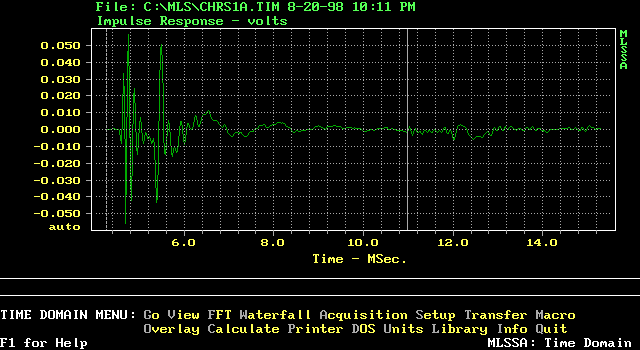
You're looking at a stock Klipsch Chorus, which is a direct descendant of the famed Klipsch Cornwall. In spite of the frighteningly bad impulse response, the speaker actually sounds quite good, with a fresh, lively, very dynamic sound - this is almost certainly due to the low IM distortion that Klipsch speakers are known for. In terms of impulse response, I should add the Cornwall, and its successor, the Chorus, are actually some of the best-measuring Klipsch's - the La Scala and Klipschorn have much more time dispersion, thanks to the very different path-lengths between the bass, mid, and treble horns.
With this speaker, the double-peaks are due to the different path lengths between the HF and MF horns, which not surprisingly, are about a third of a millisecond apart (five inches). The fairly resonant decay signatures are typical of PA-style horns, and are caused by standing-waves reflecting from the sharp edge of the horn-mouth reflecting back into the horn and hitting the phase plug. The standing-waves are also responsible for the characteristic triple-peak seen in the impedance curves of most horns - which makes passive crossover design considerably more challenging for horns, thanks to the impedance variations.
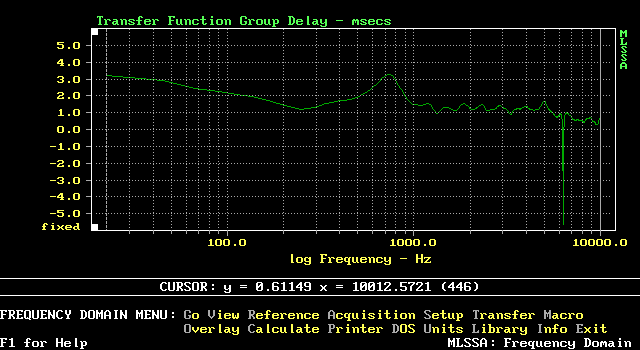
The Group Delay plot makes the crossover frequencies pretty obvious, with the mid/high crossover (and driver offsets) creating a 6 millisecond deviation at 6.2 kHz. The woofer crossover is also easily seen with a 2 millisecond deviation at 750 Hz.
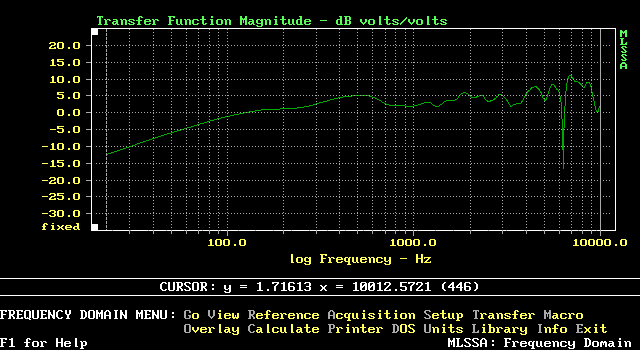
The odd-looking null is due to the drivers being several wavelengths apart at the 6.2 kHz crossover frequency, which makes the vertical polar pattern very sharp-edged. Moving the microphone a half-inch would move the null around in frequency, but no combination of microphone placement, or driver phasing, would get rid of it (I tried). The tipped-up response is true also; the Chorus has a forward balance, and needs to put fairly close to the rear wall to sound its best. It shares that attribute with the Cornwall, which as its name implies, is designed to be put in a corner or against a wall (PWK's sense of humor in naming his products).
It needs to be repeated this speaker sounds a lot better than it looks; although it's certainly not a low-coloration speaker, the dynamic presentation, especially with live recordings of bluegrass and rock music, is impressive. Classic music - well, not so much. My friend Gary Dahl plays the tympany in a local symphony, and is a choir director as well. He wondered if an external tweeter would sound better, along with minor changes to the crossover.
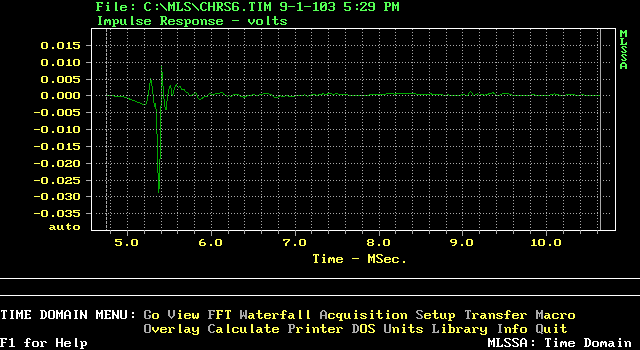
The new tweeter ended up on top of the cabinet, at the very rear, mounted on a small wooden stand. The crossover was modified for flatter response, but retaining the Klipsch autoformers, which play a big role in the characteristic Klipsch sound. You can see where time-adjusting the speaker without MLS would be almost impossible; this is why I harangue manufacturers and audio-friends to stop using outdated frequency-only setups, and get a MLS system instead.
Now the Chorus is almost perfectly time-aligned - better than the Ariel, or most other audiophile speakers. It looked a little odd with the tweeter sitting on top, and placed so far back, but that's what the doctor said needed to be done. The time performance is so much better it's hard to believe it's the same speaker.
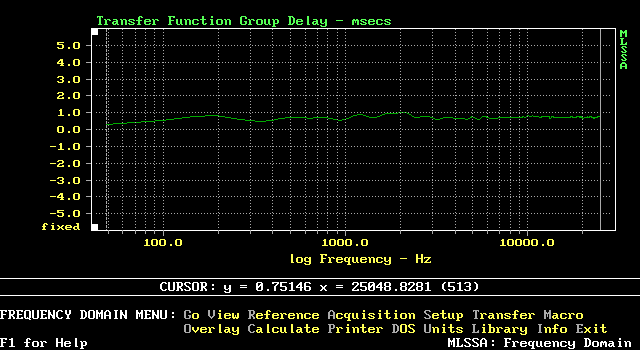
The modified Klpsch is very close to linear-phase; all of the artifacts seen in the previous plot are gone, and the crossover frequencies are not visible on the graph. Total deviation over most of the spectrum is less than 600 microseconds, or 8.4 inches.
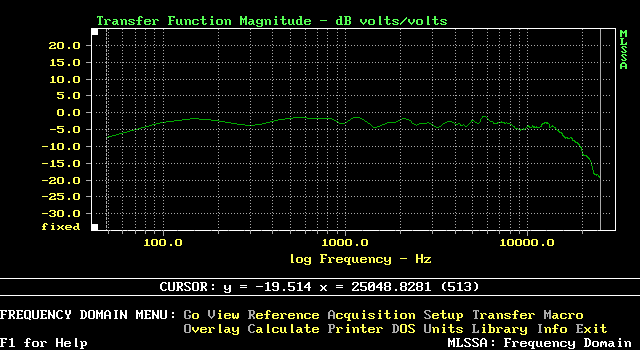
The frequency response is also startlingly better as well. Even though the crossover is pretty close to stock, retaining the same topology (which is pretty good), now it can finally work correctly, with the drivers in close time-alignment. In practice time alignment isn't as hard as it sounds; simply lining up the voice coils will get you 90% there (the acoustic center of radiation is fairly far back in most drivers).
After a month of twiddlng around, how did it sound? Well - not as good as it looked. The balance wasn't right; it was too bass-heavy. In terms of coloration and image quality, the speaker was much better, and the "PA sound" coloration was gone.
The balance problem could be partly alleviated by putting the speakers farther into the room, audiophile-style, but the Chorus, like the Cornwall, is a physically imposing speaker, and looks odd sitting in the middle of the room. This experience shows that it's easy to get led down the garden path - the measurements above are some of the best I've seen, but trust me, the modified Chorus was a long way from being one of the best. I undid all the mods and returned them to stock condition, and the bright, fresh Klipsch sound was back.
I could have really gotten into the project and kept going; this would have been at least a commitment of six months or more. If I was working on a new crossover for the La Scala or Klipschorn, that would be one thing - but well, shucks, Al Klappenberger over at ALK has already gotten there, and owns that niche already - and as you can see from his website, he's a sharp cookie that knows filter theory inside and out.
Rapid settling times to zero are usually considered a desirable design goal. However - this kind of impulse response is a moot point when the arrival times from each driver are several wavelengths apart. Given that reality with Klipsch, Al Klappenberger makes a strong case for ultra-steep crossovers with this 4MB PDF.
You could almost say a Klipsch is the inverse of Quad ELS design philosophy; instead of optimizing for minimum energy storage with low mass drivers and no cabinet signature, the Klipsch is optimized for very low IM distortion and extremely wide dynamics. What's really interesting is that both sound open and fast - but technically, they do so for completely different reasons.
This is why most audiophiles don't know what they're talking about when they discuss "good transient response". Without measuring, you have no way of knowing if it's low IM distortion, lack of voice-coil heating, more headroom before overload, absence of cabinet resonance, or fast settling time. All of these subjectively sound like "good transient response".
Measurements that show the impulse response of complete horn systems are fairly rare - but Tom Danley has comprehensive measurements of his Synergy horn on Page Five of this PDF. As you can see, the impulse response is completely different from the stock Klipsch, and looks a lot more like the time-aligned version - but with the very important difference of a coaxial dispersion pattern that comes from a time-synchronized array of drivers inside the horn. Even if you have a slow connection, Tom's PDF is worth downloading and reading.
Text and Pictures © Lynn Olson 2006.